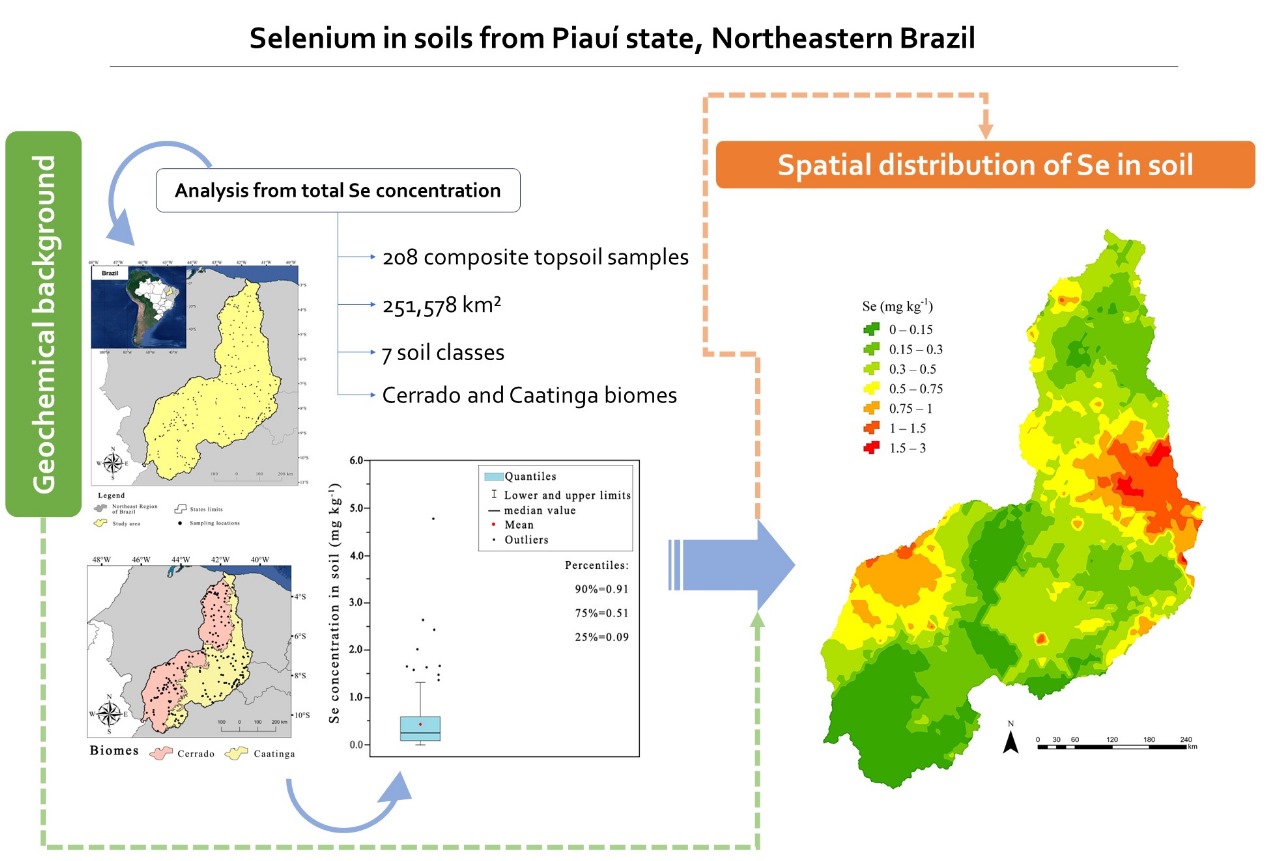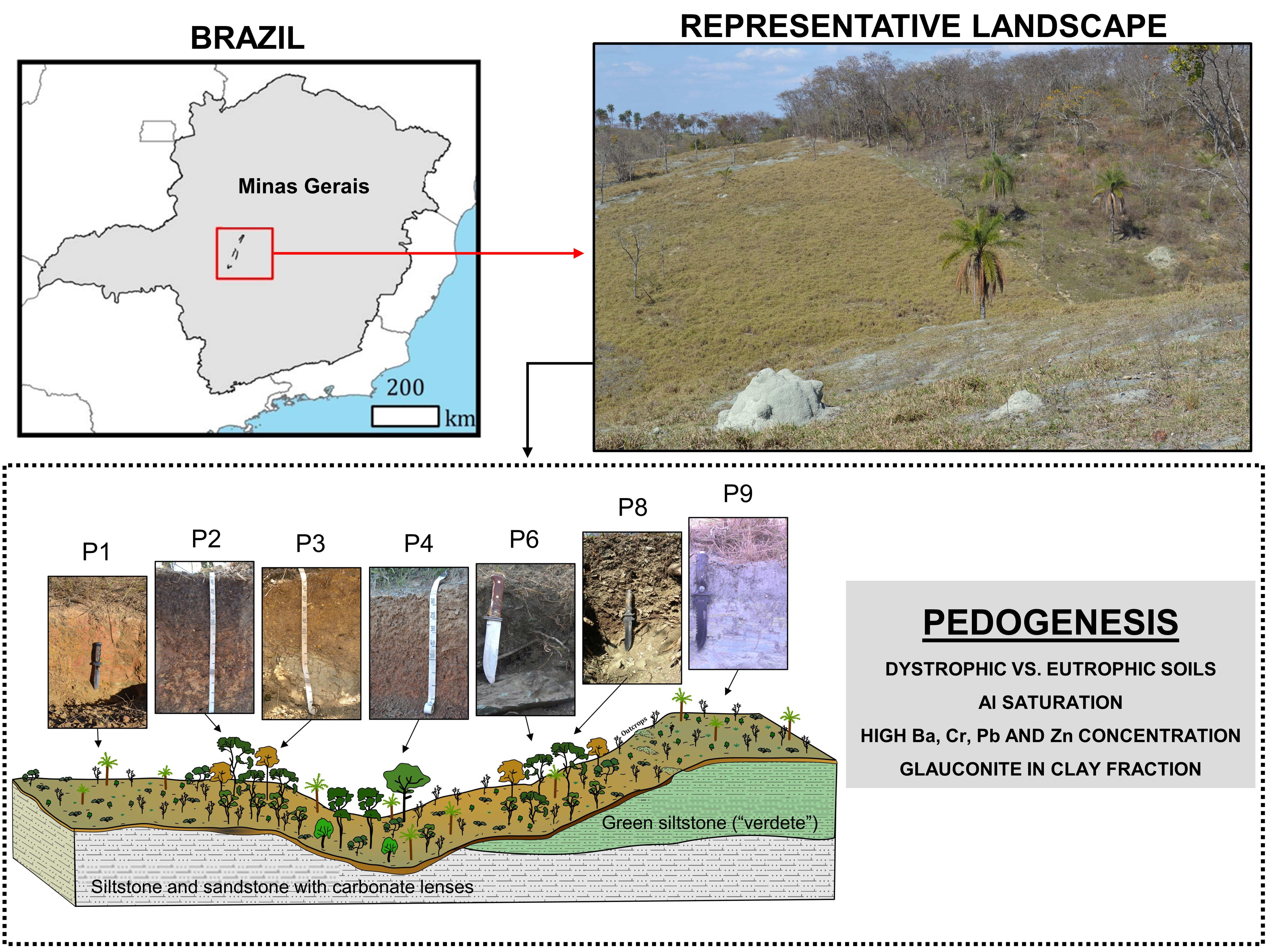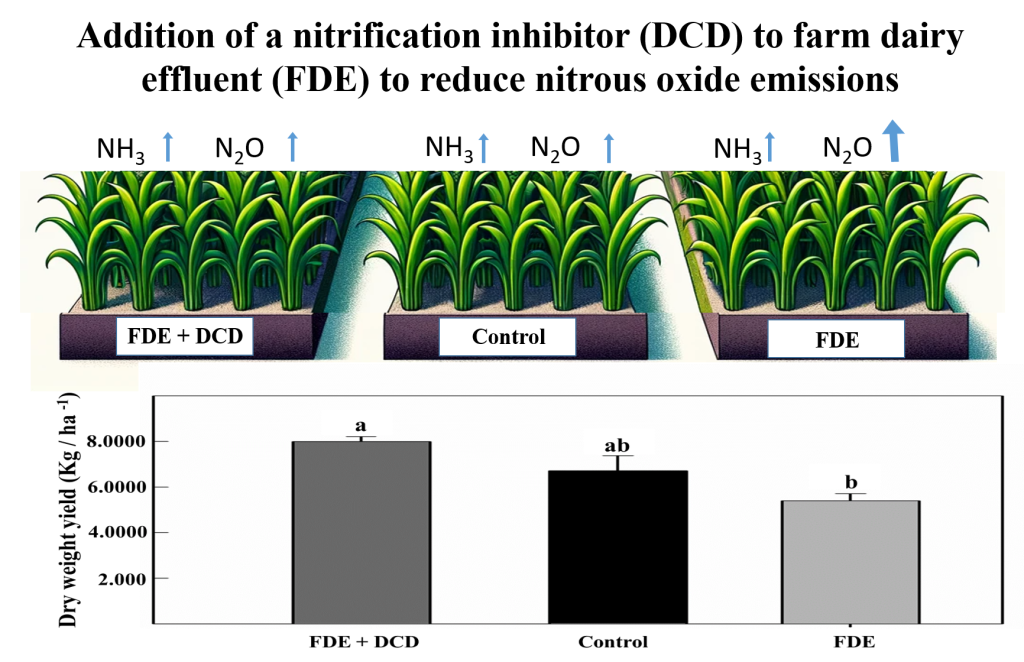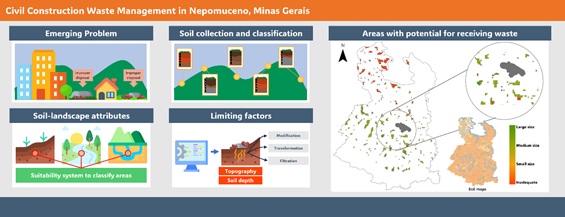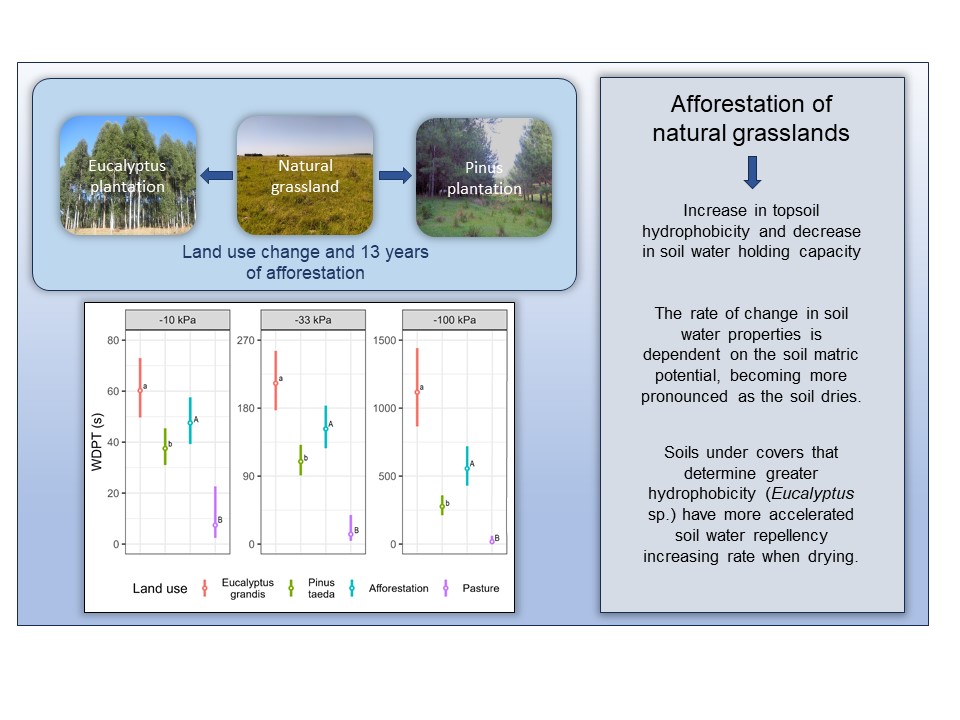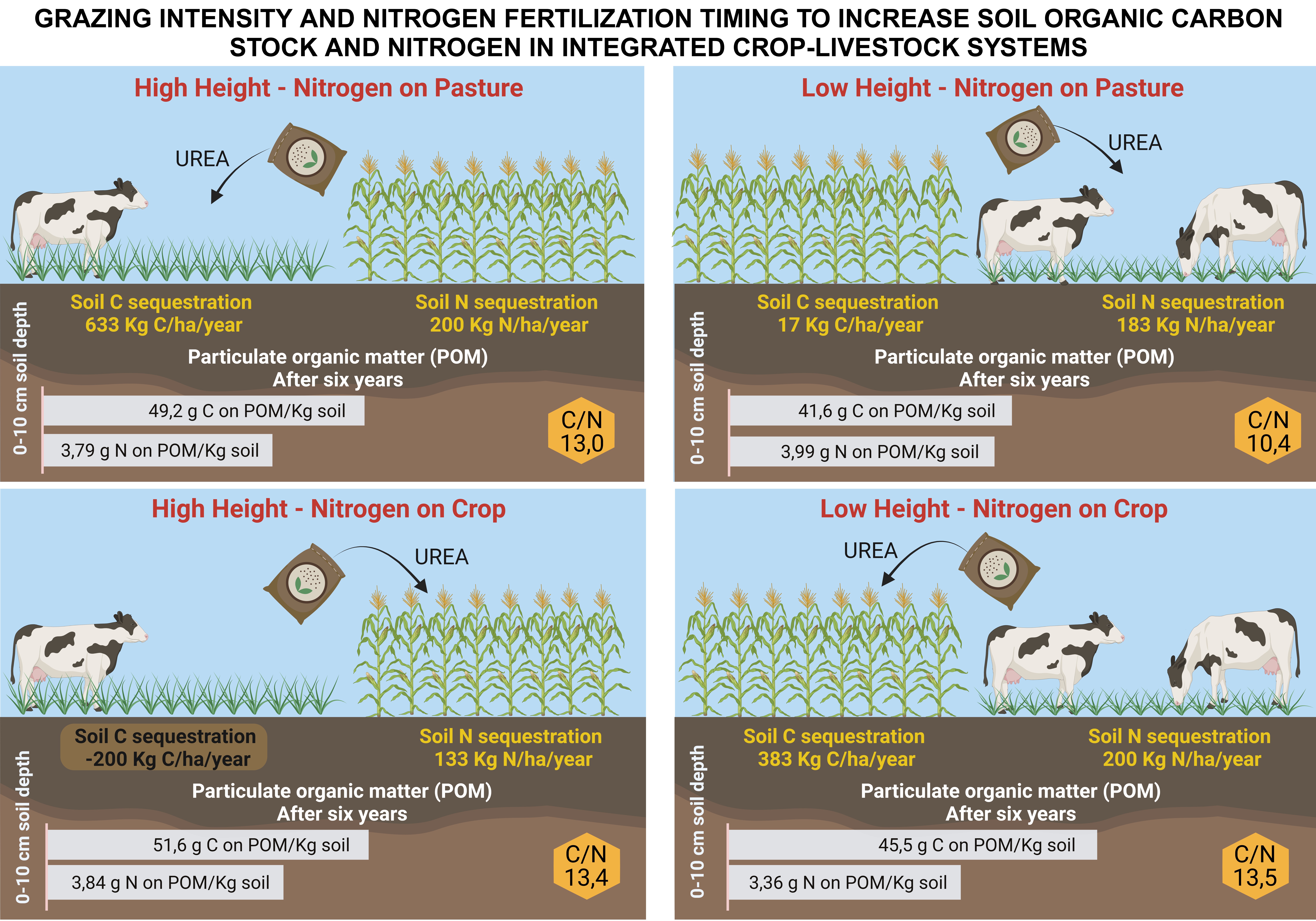Geochemical background and geopedological interactions of selenium in soils from Piauí state, Northeastern Brazil
25/Mar/2024
ABSTRACT Although Selenium (Se) plays a role as a micronutrient for humans through vegetable consumption, it is also recognized as toxic when present in excessive quantities. Therefore, quantifying Se contents in soils can prevent diseases influenced by crop Se deficiency or excess. We aimed to measure background contents, establish quality reference values (QRV) for Se in soils from two Brazilian biomes (Cerrado and Caatinga), and assess how geopedological factors affect Se content and spatial variability. Two hundred and eight composite […]
Boron nutrition improves peanuts yield and seed quality in a low B sandy soil
25/Mar/2024
ABSTRACT Peanuts are mainly grown in sandy soils with low boron content, which may limit the crop yield, especially runner-type cultivars that have high-yields. Boron deficiency causes hollow heart in peanut seeds, reducing yield and seed quality, but the best strategy to supply boron to peanut is still not known. This study aimed to evaluate peanuts nutrition, yield, and seed quality as a function of boron rate, source, and application form. The study was conducted for two years in sandy […]
Influence of soil nutrients on net primary productivity in post-mining forests in the Colombian Pacific
25/Mar/2024
ABSTRACT Tropical forests have the highest rates of net primary productivity (NPP) in terrestrial ecosystems and, therefore, may contribute significantly to the mitigation of global climate change. Although NPP is influenced by soil fertility, and recently, in some regions, mining activity in forest ecosystems has intensified. Little is known about how soils determine the restoration of NPP in forests degraded by mining. We evaluated the influence of soil nutrients on wood NPP of post-mining forests in the biogeographic Chocó region […]
Pedogenesis of pelitic rocks of the Serra da Saudade Formation – Bambuí Group
25/Mar/2024
ABSTRACT Serra da Saudade Formation corresponds to the upper part of the stratigraphic column of the Bambuí Group. Few studies have addressed the soil properties and pedogenesis of the pelitic rocks rich in potassium minerals of this formation. This study analyzed siltstone-derived soils, some of which are glauconitic (green siltstone; “verdete”), to understand the role of the main pedogenetic factors and processes in the landscape of the Central-West region of the Minas Gerais State, covered by Cerrado vegetation. Nine soil […]
Oxidative stress as markers in identification of aluminum-tolerant peach tree rootstock cultivars and clonal selections
11/Mar/2024
ABSTRACT Peach rootstock and scion cultivars are selected in breeding programs considering resistance to pests and diseases, salt tolerance, drought tolerance, and vigor. However, rootstock tolerance to aluminum (Al), which is markedly present in tropical and subtropical soils of the world, is not considered. Thus, it is essential to define potential markers that can contribute to the selection of Al-resistant or Al-tolerant peach rootstocks. The objective of this study was to identify Al-tolerant peach tree rootstock cultivars and clonal selections […]
Nitrification inhibitor addition to farm dairy effluent to reduce nitrous oxide emissions
11/Mar/2024
ABSTRACT Increasing the use of nitrogen (N) fertilizers will be necessary to enhance grain and pasture yields to satisfy the growing world demand for food. Organic amendments, such as farm dairy effluents (FDE), are an alternative to traditional synthetic fertilizers. However, part of the applied N could be lost as ammonia (NH3) volatilization or nitrous oxide (N2O) emission, decreasing N availability to plants. Nitrification inhibitors, such as dicyandiamide (DCD), suppress the microbial process of nitrification, decreasing soil nitrate concentration and, […]
Disposal of solid waste from civil construction: a screening proposal for a suitability system and case study in Nepomuceno, Minas Gerais
11/Mar/2024
ABSTRACT Most Brazilian municipalities do not have regulated areas for solid waste disposal in civil construction. Usually, residues are disposed of vacant lots and dumps, posing risks to the population health and the environment. Soils are the primary means for the disposal or recycling of waste, highlighting the importance of well-characterized soils and their respective landscape. This study aimed to establish a land suitability system for solid residues in civil construction and apply such information in a case study in […]
Differential effects on soil water repellency of Eucalyptus and Pinus plantations replacing natural pastures
11/Mar/2024
ABSTRACT Land-use changes from native pastures to forest plantations in humid temperate areas have raised concerns about their potential impact on the environment. This study aimed to assess the effects of such changes on soil water properties, focusing on the impact of the forest species planted and their relationship with changes in soil C content. Specifically, we aimed to identify the development of surficial soil hydrophobicity and changes in soil water holding capacity. A long-term forest experiment with variable planting […]
Grazing intensity and nitrogen fertilization timing to increase soil organic carbon stock and nitrogen in integrated crop-livestock systems
07/Dec/2023
ABSTRACT Integrated crop-livestock systems (ICLS) foster synergistic relationships to increase nitrogen (N) cycling and soil organic carbon (SOC) accrual in agricultural setups. This study evaluated how the grazing intensity and N fertilization (rates and timing) affect both SOC and N fractions, and soil organic matter chemical composition in an ICLS managed under no-tillage in an Oxisol, six years after initiation. The ICLS was compared to a nearby pasture (PA) and a native forest (NF). The treatments consisted of two grazing […]
Carbon and nitrogen stocks in a Rhodic Nitisol under different tillage methods and mineral and organic fertilizers
07/Dec/2023
ABSTRACT Changes in soil management, for example by more vigorous crops, adoption of conservation tillage and optimization of fertilization, can increase soil organic carbon (SOC) and total nitrogen (TN) stocks. We hypothesized that corn – black oat rotation under no-tillage (NT) and adequate soil fertilization can increase these stocks, compared to conventional tillage (CT). This study compared these two tillage methods and organic with mineral fertilizers, regarding their effects on C and N cycling and SOC and TN stocks in […]

